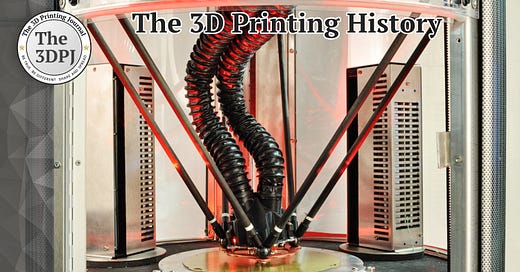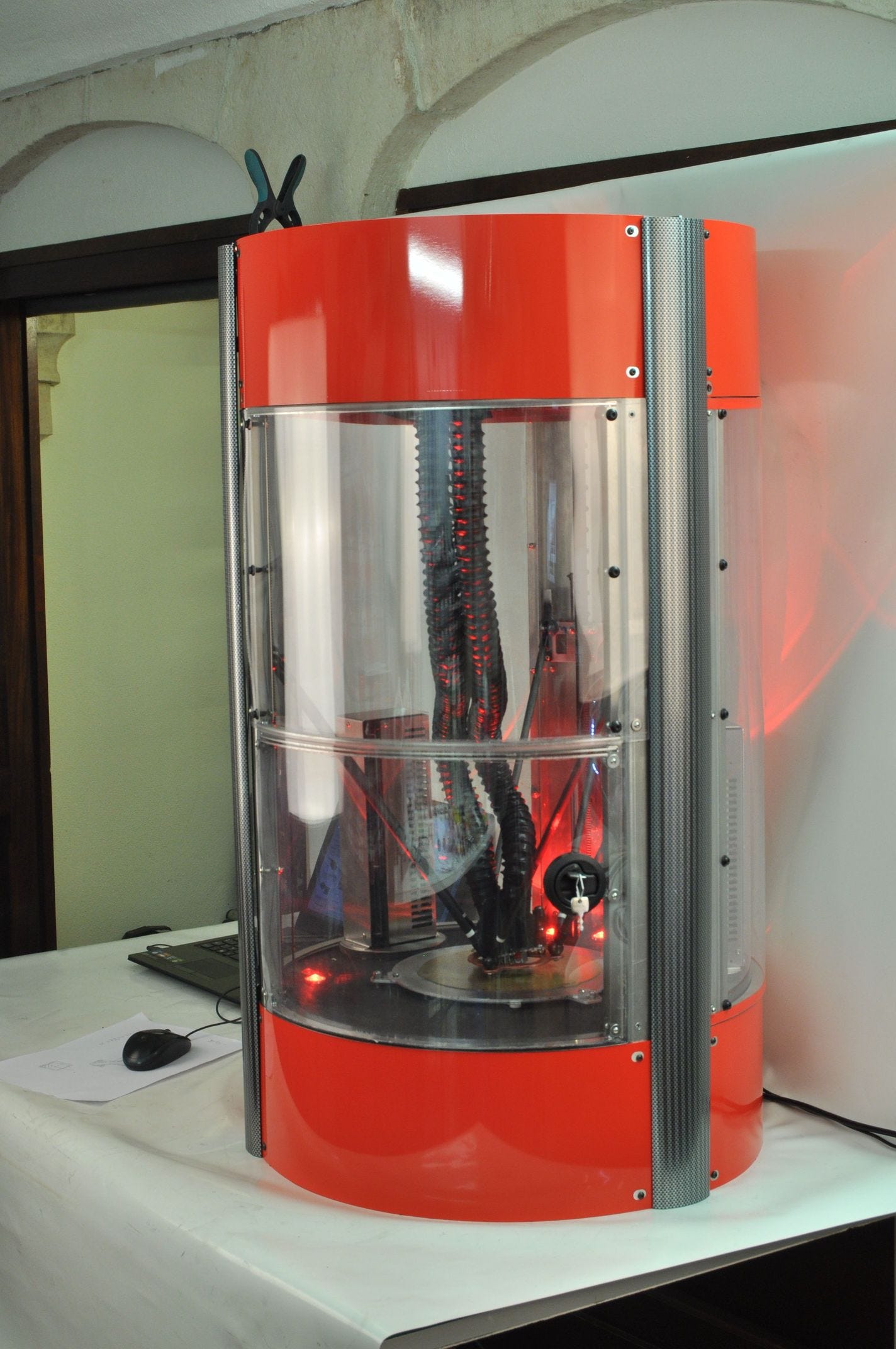01-29-2016: Qualup introduced the first FFF delta 3D printer with a closed and heated build chamber
The 3D printer was developed for Maped
On January 29, 2016, the French company Qualup SAS, known at the time for creating the SpiderBot delta-based 3D printer, announced the completion of a new 3D printer model developed in collaboration with the global office and school supplies manufacturer, Maped. This was the first delta printer with a closed and heated build chamber and one of the first in the world outside of Stratasys.
The project aimed to create a professional delta 3D printer equipped with a heated chamber, enabling ABS printing. At the time, Maped was using the Stratasys Fortus, and while they were highly satisfied with the print quality, they were looking to reduce material costs.
The agreement between the two companies was signed in October 2015. In the following months, Qualup’s R&D team, together with Maped’s specialists, worked on improving the existing technologies used in SpiderBot printers. One of the key upgrades was increasing the maximum temperature of the heated chamber from 55–60°C to 90°C, allowing stable ABS printing without warping or layer separation.
Implementing this change required redesigning several key components, including the use of new high-temperature-resistant neodymium magnets developed in collaboration with Maped. Additionally, the motion system had to be redesigned with a mechanical solution that could withstand prolonged exposure to high temperatures.
The 3D printer retained the characteristic stainless steel and aluminum construction of the SpiderBot series but featured an increased build volume of 250 mm in diameter and 200 mm in height. It incorporated a dual extrusion system with a mechanical tilting nozzle mechanism and an adjustable chamber temperature ranging from 30 to 90°C. The printer was optimized for printing with ABS and HIPS, though it supported other materials as well. The maximum movement speed of the axes exceeded 300 mm/s, and the printhead exchange process was designed to take less than 10 minutes.
Qualup developed delta kinematics 3D printers to avoid infringing Stratasys patents, which were still active at the time. However, as soon as those patents expired, the company transitioned to Cartesian geometry.
Today, Qualup develops large industrial FFF systems such as the Qu4-HT, which features an adaptive chamber ensuring minimal warm-up time. At last year’s Formnext trade show, the company also introduced an innovative technology called PIVOT—the rotating printhead, capable of infinite rotation in both directions. This innovation allows the nozzle orientation to be continuously adjusted in relation to movements on the X and Y axes. The goal of this solution is to cut printing times by a factor of three while maintaining the print precision of a 0.50mm nozzle.
Source: www.3ders.org






